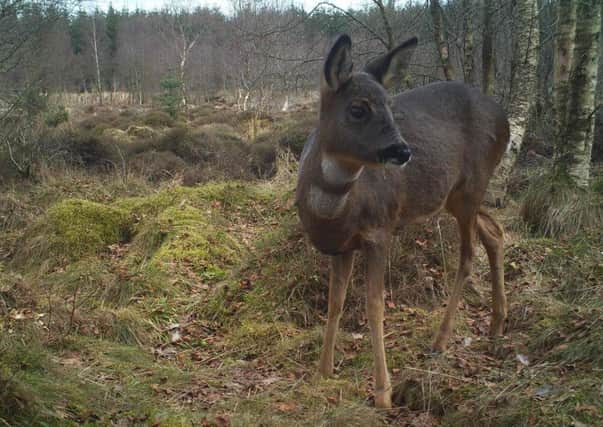Camera reveals woodland secrets


Some birds which disappear completely over the winter have suddenly re-appeared, notably the song thrush whose song can now be heard almost everywhere competing with those of its cousins the missel thrush and blackbird.
The larger mammals, such as roe deer, rabbit and brown hare are seen almost every day, but the fox is almost never seen, apart from its tracks after a snowfall.
Advertisement
Hide AdAdvertisement
Hide AdAre there other creatures about which like the fox we never seem to see?
Thanks to a wonderful Christmas gift, a ‘camera trap’, some of the secrets of the woodland are now being revealed.
This is a small camera which can be left attached to a tree or fence-post and will record anything that moves in front of it within five to 50 feet, day and night.
In the daytime it uses natural light, at night it uses infra-red. The pictures are stored on a small memory card and can be downloaded every few weeks to a computer. This is the most exciting part, when the images appear for the first time on the screen.
Advertisement
Hide AdAdvertisement
Hide AdDuring the snowy weather just after New Year the camera was placed beside a path in our garden, and the first few results included our neighbours’ dog Treacle, and one of the peacocks which come looking for bird food during the day along with pheasants, blackbirds and a grey squirrel. However, at night the main activity was from rabbits and two visits from a fox.
Since then the camera has been moved to three different locations in the woods, firstly under dense spruce trees where peanut butter was placed on a log as bait – the only visitors with a taste for peanut butter turned out to be wood mice. Their non-stop nocturnal activity triggered dozens of pictures and the bait had disappeared by the morning.
The camera is now fixed to the base of a holly tree looking over a well-trodden path, clearly used mostly by at least three roe deer which seem to enjoy posing right in front of the camera.
One of the female ‘does’ has two distinctive pale bands on the throat, while the bucks are growing antlers ‘in velvet’ at this time of year.
Advertisement
Hide AdAdvertisement
Hide AdOther visitors have been stoat and grey squirrel, as well as the normally very shy magpie and jay. Because of this success our Duns branch of the SWT may invest in a camera trap to start recording the secret wildlife of Duns Castle Nature Reserve.